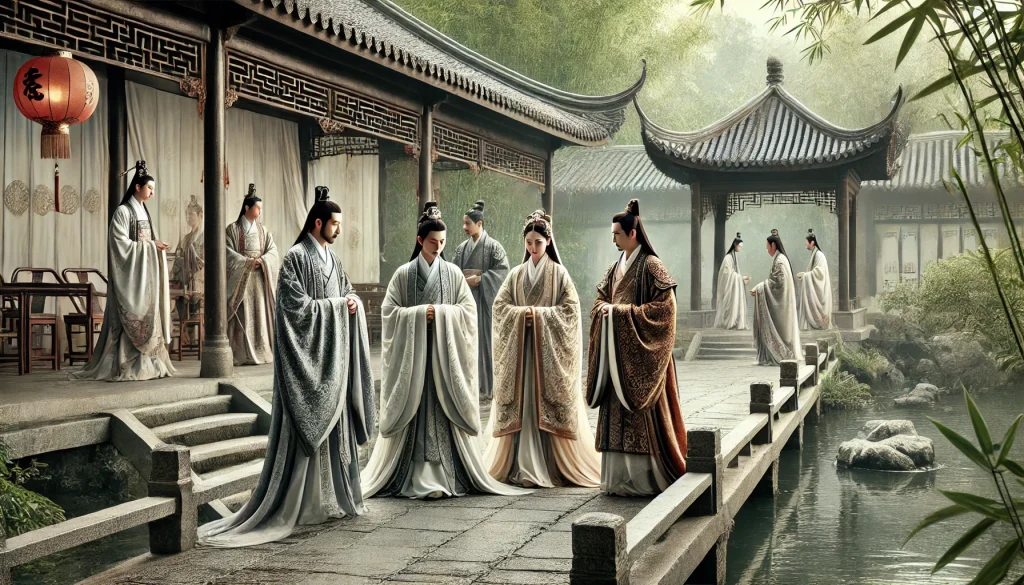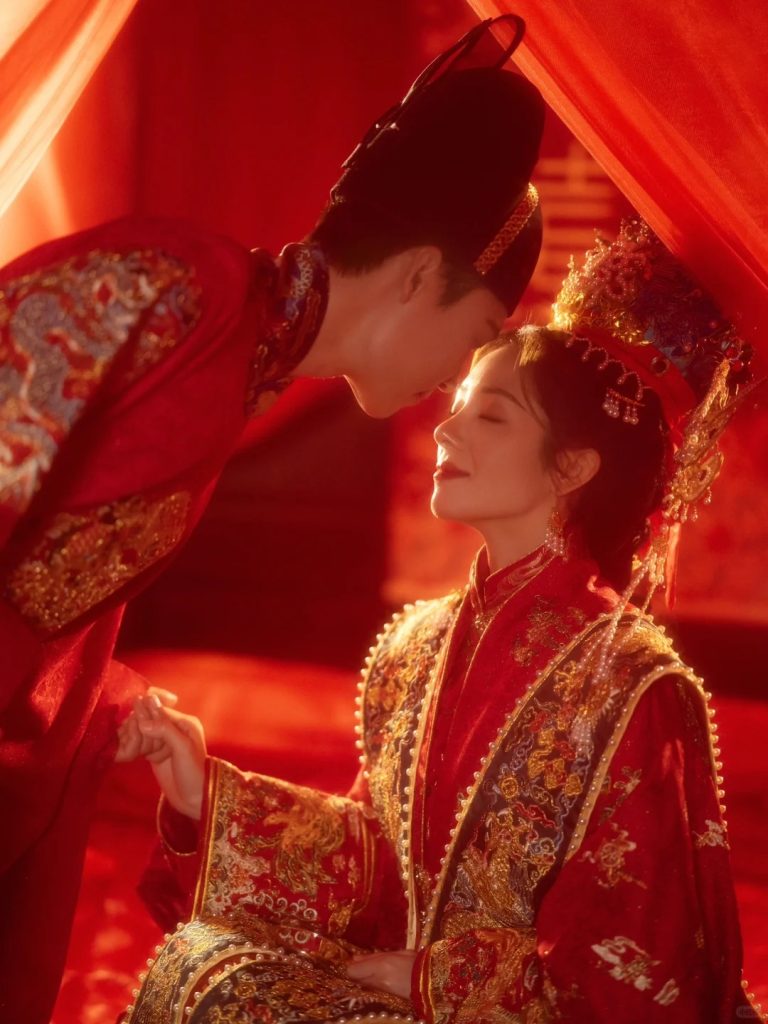Qin and Han: Wide Robes and Big Sleeves, the Style of Han Clothing under Imperial Power and Rituals

Hanfu, as an essential part of traditional Chinese attire, embodies millennia of history and profound cultural heritage. During the Qin and Han dynasties, the development of Hanfu was deeply influenced by social institutions and political transformations. With the enhancement of ritual norms, it took on the distinctive style of wide robes and long sleeves, establishing the fundamental structure of Hanfu for future generations.

I. Social Background and Clothing Development in the Qin and Han Dynasties
The Qin and Han dynasties marked the beginning of China’s unified empire, with centralized authority firmly established and a well-defined system of ritual regulations. The Qin Dynasty, inheriting elements from the Warring States period, emphasized simplicity and practicality while implementing strict dress codes to reinforce imperial authority. The Han Dynasty, on the other hand, further refined these clothing regulations, incorporating Confucian ideals that emphasized benevolence, propriety, and filial piety, making Hanfu not only a symbol of status but also a bearer of cultural values.
II. Qin Dynasty Hanfu: Simplicity and Authority Under Legalist Ideals
1. Black as the Supreme Color: The Symbol of Power
After Qin Shi Huang unified the six states, he implemented a black-dominated dress code, signifying supreme authority. According to the Records of the Grand Historian (Shiji), the Qin Dynasty revered the element of water, which was associated with the color black. As a result, government officials primarily wore dark-colored clothing to convey solemnity and discipline.
2. The Continuation of the Shenyi System
The Shenyi (深衣), a one-piece robe that seamlessly connected the upper garment and lower skirt, continued to be a popular attire in the Qin Dynasty. This style ensured a neat and elegant appearance and was worn by both nobles and commoners, reflecting the Legalist emphasis on uniformity and order.
3. Military Attire and Warrior Dress
The Qin Dynasty, known for its powerful military, designed military uniforms with practicality in mind. Soldiers typically wore short tunics with tight sleeves, allowing for ease of movement in battle. Additionally, armor made of leather and iron plates was widely used for protection. High-ranking generals and noble warriors often adorned their attire with dragon and tiger motifs, symbolizing power and prestige.
III. Han Dynasty Hanfu: The Flourishing Era of Wide Robes and Ritual Garments
With Confucianism becoming the dominant ideology of the Han Dynasty, rituals and etiquette played a crucial role in clothing culture, leading to the emergence of more flowing, elegant, and layered Hanfu styles.
1. The Rise of Wide-Robed, Long-Sleeved Fashion
A defining characteristic of Han Dynasty Hanfu was its wide sleeves and loose-fitting robes, particularly for the aristocracy and scholarly class. This style not only reflected the Confucian virtue of benevolence and dignity but also symbolized high social status.
- Imperial and Official Court Attire: The emperor’s clothing, known as the Mianfu (冕服), evolved from earlier Shenyi styles, with colors determined by the Five Elements theory. Emperor Gaozu of Han initially favored red garments, symbolizing fire.
- Scholar’s Shenyi and Women’s Ruqun: Scholars typically wore Shenyi in white or blue, signifying purity and intellect. Meanwhile, women commonly dressed in Ruqun (襦裙), featuring wide sleeves and long skirts that embodied grace and modesty.
2. The Refinement of Clothing Regulations
The Han Dynasty developed a more intricate dress code, ensuring clear distinctions between social classes:
- The Emperor’s “Twelve-Ornament Robe” (十二章服): This imperial robe was embroidered with twelve symbolic motifs, such as the sun, moon, stars, and dragons, representing celestial authority.
- Officials’ Sashes and Robes: Government officials were required to wear robes with color-coded sashes that indicated their rank, making their status easily identifiable.
- Commoners’ Attire: Ordinary people wore plain-colored clothes, such as blue, gray, or white, adhering to the Confucian ideal of simplicity and humility.
_来自小红书网页版-1024x818.jpg)
3. Changes in Women’s Hanfu Styles
Han Dynasty women’s clothing became more refined and elegant, particularly among the noble class. Their garments were typically made of silk, adorned with intricate embroidery, delicate ties, and flowing drapery, giving Hanfu a layered and sophisticated appearance. Popular styles included the Quju Shenyi (曲裾深衣) and Ruqun (襦裙), which emphasized soft femininity and noble grace.
IV. The Cultural Impact of Qin and Han Hanfu
The Hanfu of the Qin and Han periods laid the foundation for later traditional Chinese clothing and exerted a lasting cultural influence:
- The Enduring Aesthetic of Wide-Robed Hanfu: The flowing, wide-sleeved style of Han Dynasty Hanfu became a standard of elegance, influencing later dynasties such as the Tang, Song, and Ming.
- Integration of Rituals and Attire: The Confucian concept of etiquette and dress established in the Han Dynasty continued to shape Chinese clothing culture for centuries.
- Influence on Neighboring Countries: Hanfu styles from this period spread to Korea and Japan, playing a crucial role in the development of Kimono (Japan) and Hanbok (Korea).

Conclusion
During the Qin and Han dynasties, Hanfu evolved from the strict, practical designs of the Qin Dynasty to the graceful and sophisticated garments of the Han Dynasty, reflecting the shifting philosophies of Legalism to Confucianism. The wide-robed, long-sleeved elegance of Han Dynasty attire became a defining feature of Chinese clothing culture, deeply influencing later generations.
Today, as Hanfu undergoes a modern revival, the grandeur and ritualistic beauty of Qin and Han Dynasty Hanfu continue to inspire contemporary designs, bridging the past with the present.





Responses